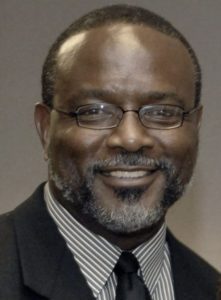The devastation that occurred last week in the village of Lahaina on the Hawaii island of Maui was breathtaking.
The island was hit with hurricane-force winds and wildfires unlike any they had ever experienced before. The photos and video footage of the flames and devastation will stay in my mind for quite some time.

Lahaina was burned to the ground. Rescue efforts are continuing, but according to reports, hundreds of people are still unaccounted for and the official death toll as of Thursday morning (Aug. 17) afternoon was 110.
After hearing about the devastation, my thoughts immediately turned to the children of that community. One could not help thinking about the fear that must have been in their hearts and the long-term ramifications they will surely endure for the rest of their lives.
The devastation was catastrophic! The fires are now considered the deadliest in modern U.S. history.
According to Hawaii’s Department of Education, on the island of Maui, there are 34 public schools serving a population of 164,000 people in an area of 1,162 square miles.
The four public schools in Lahaina enroll about 3,000 students and employ just over 300 faculty and staff.
Not surprisingly, educators (teachers and administrators) in the hardest hit areas were reaching out to students and staff to help meet community needs, even as they grappled with their own personal losses.
“Honestly, there are just no words,” said Lora-Lea Grando, a vice principal at Maui High School, who shared her thoughts as she worked at a makeshift evacuation shelter in the school. “We can’t even think about school at this point. [Hundreds of students] won’t have a place to go, and we haven’t even processed what that looks like.”
As one government official put it, “Hawaii’s educators are rising to the challenge, but who is going to rise up and take care of them?” he said.
The federal government, of course, is doing all it can to help the community recover from this disaster.
While school administrators in Hawaii are used to coordinating responses to disasters like storms and similar kinds of hurricanes, the nature of the Lahaina fire and the scale of destruction is unprecedented and simply overwhelming.
But according to state Department of Education officials, most of the public schools on Maui have begun phased re-openings this week, except for the four public school campuses in Lahaina, where most of the damage occurred.
City leaders are trying to restore normalcy as quickly and as safely as possible.
The Department of Education is making sure there are mental health experts on-site to deal with the many issues that will surely manifest as schools try to resume operations as soon as possible.
I, admittedly, like many in this area of the country, have not given much thought to the impact of climate change. But it is a frightening phenomenon with far-reaching implications for every aspect of our society, including public education.
What is clear from what we see happening in Maui is that educators will have a significant role to play as communities and the nation deal with the threats posed by climate change.
School systems in all parts of the U.S. need to be prepared for the challenges that climate change presents and given the resources they need to adapt.
Preparing schools, however, involves a multifaceted approach encompassing infrastructure improvements, curriculum enhancements, community engagement, and sustainable practices.
The devastation in Maui should grab all our attention and cause school leaders to revisit plans to keep students and school employees safe in the event this same kind of devastation happens in their community.
While the severity of climate change can vary based on one’s location, experts agree, the consequences for everyone will get far worse before they get better.
We will continue to see a marked rise in sea levels, devastating wildfires and hurricanes, and killer heatwaves before governments (national, state, and local) take aggressive and decisive action.
The sense of urgency in the education community overall seems nonexistent. But this tragedy in Maui has raised my level of concern significantly, as I hope it does others who are able to act.
It is a wake-up call to the nation and the education community, and we better start paying attention and taking preventative measures to help us prepare for what lies ahead.
For this is not a matter of if we will see more catastrophes like we’re seeing in Maui, but when.
(To help families in Maui, visit https://rdcrss.org/3QCiIyE.)
(Follow me, TSD’s education columnist, on Twitter @curtisweathers. Email me at curtislweathers@gmail.com.)




